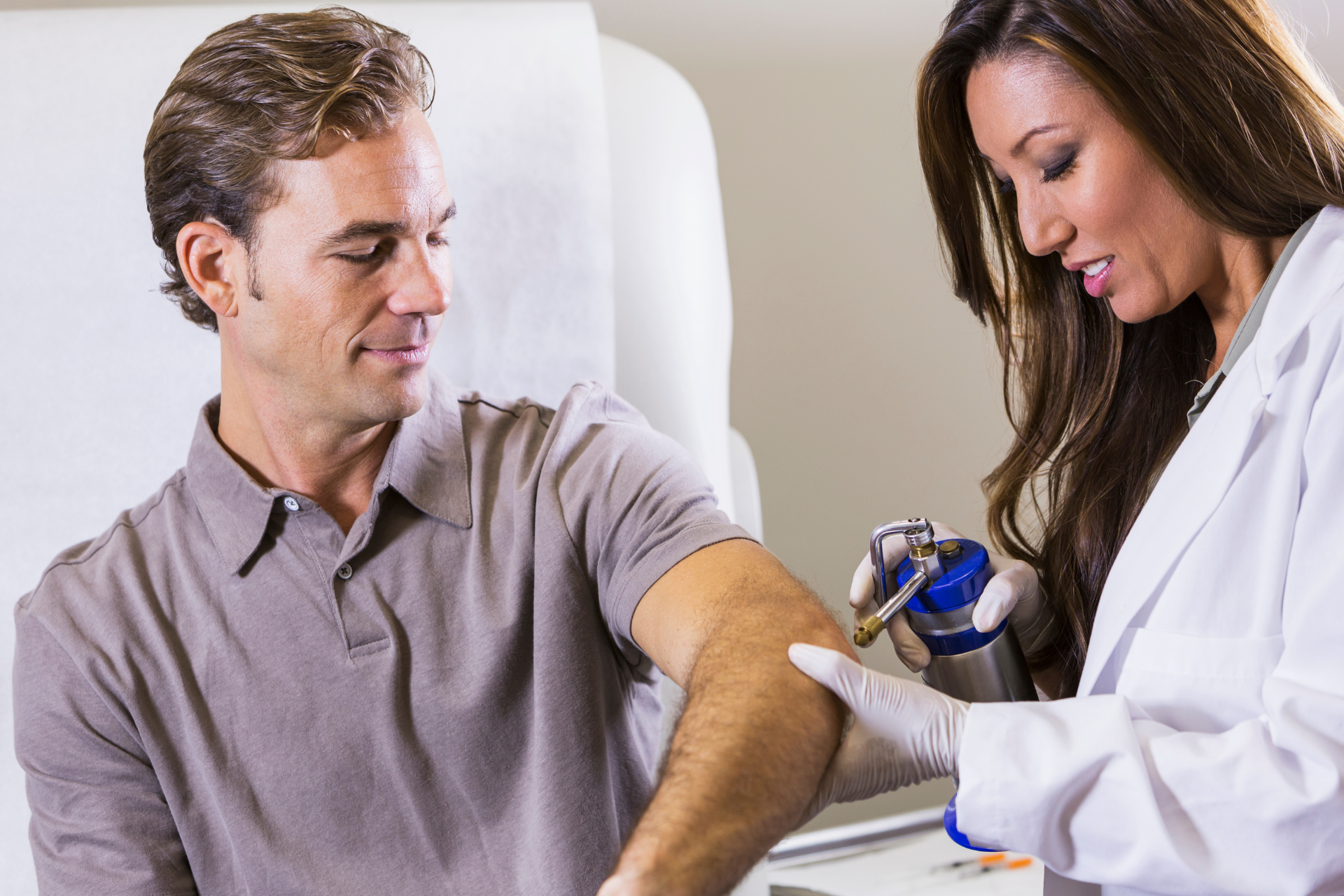Cryosurgery for Skin Lesions: Benefits, Risks, and Recovery

In the realm of dermatology, cryosurgery stands out as a popular and effective treatment method for various skin lesions. From warts and skin tags to precancerous lesions and some forms of skin cancer, cryosurgery, also known as cryotherapy, offers a minimally invasive solution with promising results. Fall Creek Skin and Health Clinic is dedicated to providing comprehensive skin care solutions to patients of all ages, making cryosurgery a key component of our treatment options. In this blog post, we'll explore the benefits, risks, and recovery process associated with cryosurgery for skin lesions.
What is Cryosurgery?
Cryosurgery involves the use of extreme cold to destroy abnormal or diseased tissue. Liquid nitrogen is commonly used in this procedure to freeze and effectively remove the targeted skin lesion. The freezing temperature causes the cells to freeze and die, eventually sloughing off from the skin surface. Cryosurgery is a quick and relatively painless procedure that can be performed in a clinic setting without the need for anesthesia.
Benefits of Cryosurgery for Skin Lesions
1. Non-invasive
Cryosurgery is considered a non-invasive procedure, making it suitable for patients who prefer minimal discomfort and quick recovery times.
2. Cost-effective
As Fall Creek Skin and Health Clinic strives to provide affordable healthcare services, cryosurgery offers a cost-effective option for treating a variety of skin lesions without the need for extensive surgery.
3. Versatile
Cryosurgery can be used to treat a wide range of skin lesions, including warts, skin tags, actinic keratoses, and certain types of skin cancer, providing a versatile solution for diverse patient needs.
4. Minimal scarring
Compared to traditional surgical methods, cryosurgery typically results in minimal scarring, promoting better cosmetic outcomes for patients.
Risks of Cryosurgery for Skin Lesions
While cryosurgery is generally well-tolerated, some risks and potential side effects may arise:
1. Pigment changes
Following cryosurgery, some patients may experience temporary or permanent changes in skin pigmentation in the treated area.
2. Nerve damage
There is a small risk of nerve damage associated with cryosurgery, which can lead to altered sensation or numbness in the treated area.
3. Infection
In rare cases, cryosurgery may result in infection at the treatment site, necessitating proper post-procedural care to prevent complications.
Recovery Process After Cryosurgery
The recovery period after cryosurgery is usually straightforward, with most patients experiencing minimal discomfort and quick healing. Here are some general guidelines for post-cryosurgery care:
1. Keep the treated area clean and dry
It's essential to keep the treated area clean and dry to reduce the risk of infection.
2. Avoid picking or scratching the treated area
Resist the temptation to pick at the scab that forms after cryosurgery, as this can interfere with the healing process and increase the likelihood of scarring.
3. Follow any specific instructions provided by your dermatologist
Your skin care provider at Fall Creek Skin and Health Clinic will provide you with detailed post-operative instructions tailored to your specific needs and treatment site.
4. Monitor for signs of infection
Watch for signs of infection, such as increasing redness, swelling, or drainage from the treated area, and contact your healthcare provider if you have any concerns.
At Fall Creek Skin and Health Clinic, our team of experienced dermatologists is dedicated to delivering personalized and effective care for a wide range of skin conditions. If you're considering cryosurgery for a skin lesion or want to explore treatment options, schedule a consultation with us to discuss the best course of action for your skin health needs. Cryosurgery may be the solution you've been looking for to achieve clear, healthy skin with minimal downtime and optimal results.



Need Our Services?
Book a free consultation

Our promise is to offer high-quality medical attention at a fair price in a clean, friendly, and professional environment.
QUICK LINKS
BUSINESS HOURS
- Mon - Thu
- -
- Friday
- -
- Saturday
- Appointment Only
- Sunday
- Closed
All Rights Reserved | Fall Creek Skin and Health Clinic |
